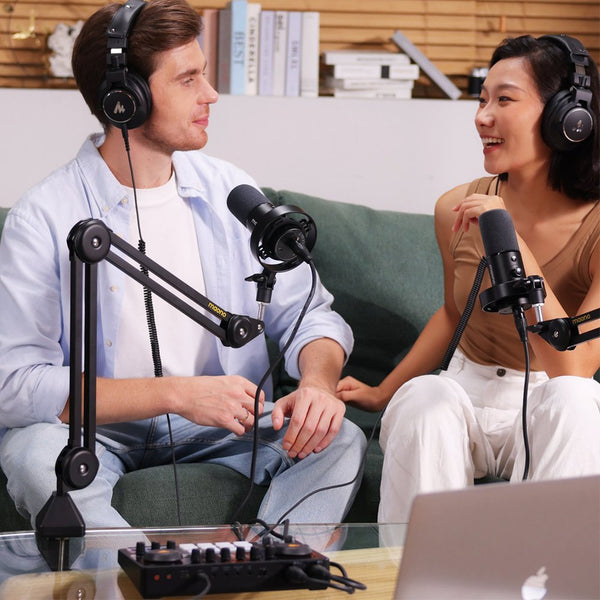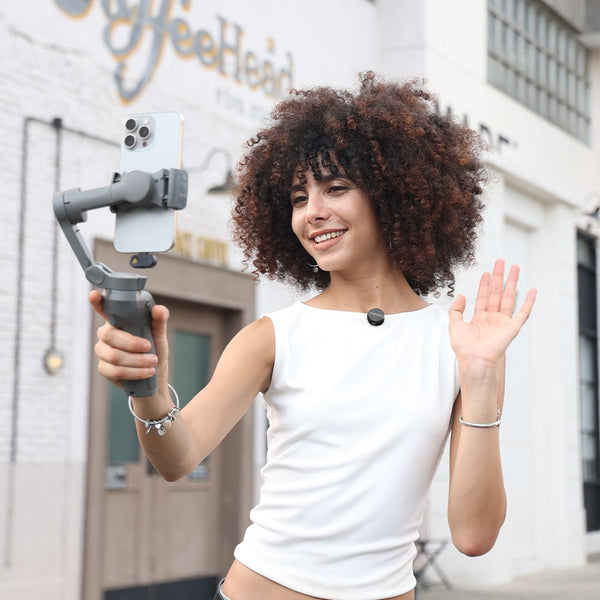Do you ever think about overcoming your fear of singing online by facing it and starting to post your songs?
For beginners, there are often many questions that make aspiring content creators hesitate to share their music. Hopefully, this article will serve as a guide to help creators build confidence, sing with passion, and start sharing their music online.
In today’s creator economy, TikTok has become one of the most powerful platforms for showcasing singing talent. Whether you're singing covers, performing originals, or harmonizing with viral audio, one thing is certain: audio quality matters. A crisp vocal recording can be the difference between someone scrolling past or clicking that heart button.
Before diving into your next TikTok singing post, it’s crucial to understand the tools at your disposal—especially your microphone for singing. Two popular choices for home recording are USB and XLR microphones. Each has its advantages, and choosing the right one depends on your budget, technical comfort, and content goals.
USB vs XLR Microphones for Home Vocal Recording
USB microphones plug directly into your computer or smartphone and are perfect for beginners. They are plug-and-play, meaning you don’t need extra gear to start recording. They’re ideal for singers who want a quick, streamlined setup and are often considered among the best microphones for singing at home.
XLR microphones, on the other hand, require an audio interface or mixer to connect to your computer. While they’re less portable and a bit more complex to set up, XLR mics offer higher audio fidelity and flexibility, making them a top choice for serious vocalists searching for the best microphone for recording singing.
Pros of USB Microphones:
-
Easy setup (just plug into your computer)
-
Portable and great for mobile recording
-
Affordable and beginner-friendly
Pros of XLR Microphones:
-
Superior sound quality
-
Expandable setup for future upgrades
-
Professional-grade performance
How to Make Your Singing Stand Out on TikTok
With so many content creators, how do I stand out?
TikTok rewards creativity, consistency, and high-quality production. Beyond your vocal talent, your presentation—including sound clarity, video lighting, editing, and audience engagement—all play key roles in helping your videos stand out in the feed.
Start with these tips:
-
Use a professional-sounding mic for recording singing (like the ones listed below)
-
Add visual effects or creative camera angles
-
Maintain a consistent posting schedule
-
Engage with your audience in comments or live sessions
What hashtags should I use for singing content?
Using the right hashtags boosts discoverability. Try:
-
#SingingCover
-
#TikTokSinger
-
#VocalChallenge
-
#DuetThis
-
#OriginalMusic
-
#AcousticVibes
-
#VocalPerformance
Always mix trending tags with niche-specific ones to reach both broad and targeted audiences.
How do I sync my recorded vocals with TikTok videos?
-
Record your vocals first using your mic and editing software.
-
Export the audio as a high-quality MP3 or WAV file.
-
Upload your edited audio and lip-sync or sing along when filming.
-
You can also use TikTok's post-editing tools to align audio with your video.
This layered approach ensures you get studio-like sound without compromising sync.
Should I use original sound or upload my own audio?
If you're singing over a beat or doing a cover, you may want to upload your own edited audio to ensure better quality. TikTok’s built-in mic doesn’t always capture vocals cleanly, so pre-recording and syncing is often the better route.
However, if you're doing something spontaneous or participating in a duet challenge, using TikTok’s original sound can be more engaging and relatable.
Can I use copyrighted music?
TikTok provides a library of licensed sounds, which you’re free to use. If you upload your own audio and it includes copyrighted music, your video may be muted or removed. For covers, it's safest to:
-
Use instrumental versions
-
Limit use to short snippets
-
Add a disclaimer in the caption (though this doesn't guarantee protection)
Recording Vocals at Home: Your Setup Guide
How do I set up a microphone properly for clear recordings?
-
Use a pop filter to eliminate plosives (like "p" and "b" sounds).
-
Keep the mic 6–12 inches from your mouth.
-
Use a shock mount or boom arm to reduce vibration and desk noise.
-
Record in a quiet, padded space—a closet full of clothes works wonders!
What are the best settings for recording vocals without background noise?
-
Set your input gain to avoid clipping (distortion)
-
Use cardioid pickup pattern to focus on your voice and reject ambient sound
-
Record at 24-bit/48kHz for professional-grade audio
-
Turn off noisy appliances and close windows when recording
Recommended Microphones for Singing on TikTok
Maono PM422 (USB Microphone)
Microphone User Review:
This is a top-tier USB condenser mic perfect for creators who want pro-level sound without the complexity of XLR. It’s one of the best singing microphones for beginners and content creators alike.
Features:
-
Plug-and-play via USB
-
192kHz/24-bit resolution
-
Cardioid pattern for vocal clarity
-
Touch-sensitive (one-touch) mute button
-
Gain control knob and monitoring jack
-
Sturdy boom arm and shock mount included
Why it’s great for TikTok:
The Maono PM422 delivers clean vocals and is super easy to set up. You can start recording right away—perfect for singers who want quick results with minimal gear. It's often recommended as the best microphone for recording singing on a budget.
Maono PM320 (XLR Microphone)

The Maono PM320 is a professional-grade XLR condenser mic ideal for artists who want high-fidelity sound and flexibility. If you're searching for the best singing microphone with studio-level quality, this is a top contender.
Features:
-
20-18,000 Hz frequency response
-
Requires audio interface or mixer or 48V phantom power supply
-
Cardioid pattern for focused sound
-
Durable all-metal construction
-
Comes with boom arm and pop filter
Why it’s great for TikTok:
For creators who want to level up, the PM320 gives rich, natural vocal tones—perfect for music covers, harmonies, and long-form videos. It’s often included in lists of the best microphones for singing at home.
Editing Tips to Polish Your Sound and Look
How to record clean audio using your phone and a mic?
Use a USB mic with a phone-compatible adapter (like a USB-C or Lightning to USB converter). Apps like Dolby On, BandLab, or Voice Recorder Pro allow you to capture high-quality audio on mobile. Just make sure to:
-
Record in airplane mode
-
Use a quiet environment
-
Monitor audio levels with headphones
What is the best free software for editing vocals?
For basic editing and mixing:
-
Audacity (Windows/Mac/Linux) – Great for trimming, cleaning up noise, and adding effects
-
BandLab (browser-based/mobile) – Ideal for multi-track recording and TikTok integration
-
GarageBand (Mac/iOS) – Fantastic for layering vocals and virtual instruments
How do I add reverb or effects to sound more professional?
-
In Audacity, use the Reverb and Compressor plugins under the "Effect" tab.
-
In BandLab, use built-in vocal presets like "Studio Reverb" or "Radio Voice."
-
Don’t overdo it—subtle reverb and EQ can enhance vocals, but too much makes it sound artificial.
Best lighting and background setup for TikTok singing videos?
-
Use a ring light or soft LED panels to illuminate your face evenly.
-
Position your camera at eye level for a flattering angle.
-
Keep your background tidy or add aesthetic elements (e.g., LED strips, posters).
-
Consider backdrops or blur effects if filming in a busy room.
Conclusion
Whether you're just starting your singing journey on TikTok or looking to level up your vocal content, choosing the right mic is a major step. USB mics like the Maono PM422 are perfect for ease of use and immediate results, while XLR mics like the Maono PM320 offer professional sound for more advanced creators.
Whether you're shopping for the best singing microphone, a mic for recording singing, or exploring the best microphones for singing on a budget, understanding the tools and techniques will elevate your recordings.
Pair your mic with thoughtful editing, smart hashtag strategies, and engaging video presentation, and you'll be well on your way to creating TikTok content that captures attention and builds an audience.
Your voice deserves to be heard clearly—make it count with the best singing microphones available today.
Related Article:
XLR vs USB Microphone: Which Is Best for Your Recording Needs?



